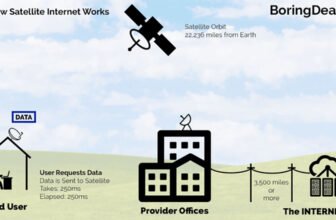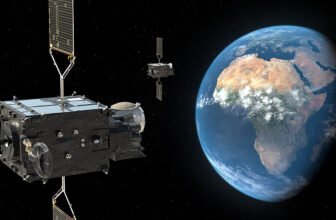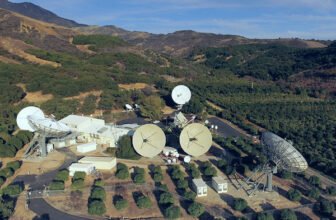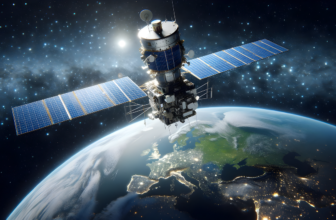
The Role of Satellite Technology in Streaming Services
Satellite technology has revolutionized the way people consume media. From traditional satellite television broadcasting to modern digital streaming platforms like Netflix and YouTube, satellite technology plays a crucial role in delivering entertainment and educational content worldwide. In this article, we will explore how satellite TV broadcasting works, the impact of satellite technology on streaming services, and how it continues to shape content consumption on a global scale.
Understanding Satellite TV Broadcasting
Satellite television is a method of delivering television programming using communications satellites orbiting the Earth. The primary goal of satellite TV broadcasting is to provide direct-to-home (DTH) services to users, especially in areas where cable or terrestrial broadcasting signals are weak or unavailable.
How Satellite TV Works
- Broadcasting Stations: TV networks transmit signals to a satellite via an uplink station. These signals are first converted into a digital format before being sent to the satellite.
- Satellite Reception and Transmission: The satellite, typically positioned in a geostationary orbit, receives the signal and retransmits it back to Earth.
- Satellite Dish Reception: Users receive the signals using a satellite dish installed at their location. A set-top box or receiver decodes the signal, making it viewable on the television.
- Types of Satellite TV: There are two primary types of satellite TV services:
- Free-to-Air (FTA): These channels are broadcast without encryption and can be accessed by anyone with a compatible dish and receiver.
- Subscription-Based (Pay TV): Users subscribe to a package offered by a service provider, such as DirecTV, Dish Network, or Sky TV, to access premium content.
Advantages of Satellite TV
- Wide Coverage: Satellite TV reaches remote and rural areas where cable infrastructure is unavailable.
- High-Quality Transmission: Digital satellite broadcasting provides high-definition (HD) and even ultra-high-definition (UHD) content.
- Multiple Channels: Users can access a diverse range of content, including entertainment, news, sports, and educational programming.
The Role of Satellite Technology in Streaming Services
In addition to traditional broadcasting, satellite technology is also integral to modern streaming services like Netflix, YouTube, and Hulu. These platforms rely on satellite networks for various functions, including content delivery, data transmission, and global coverage.
Content Delivery and Data Distribution
While services like Netflix and YouTube primarily depend on internet-based content delivery networks (CDNs), satellite technology enhances their operations in several ways:
- Backhaul and Data Transmission: Internet service providers (ISPs) and streaming platforms use satellite technology to transmit data to remote data centers and CDN nodes.
- Live Broadcasting: Live events, such as sports matches and concerts, rely on satellite uplinks to stream content to digital platforms in real-time.
- Emergency and Disaster Relief: When terrestrial networks fail due to natural disasters, satellites provide an alternative means of internet connectivity, ensuring uninterrupted streaming and communication.
How Streaming Services Utilize Satellite Technology
- Netflix: Netflix primarily operates through an extensive network of servers and fiber-optic connections. However, satellite technology plays a role in distributing content to data centers in remote locations where high-speed terrestrial internet is unavailable.
- YouTube: YouTube’s content delivery system benefits from satellite technology for live streaming and transmitting video data across global data centers, ensuring faster loading times and reduced buffering.
- Amazon Prime Video & Hulu: These platforms, like Netflix, leverage satellite communication for content distribution and redundancy in case of terrestrial network failures.
- Satellite-Based Internet Services: Companies like SpaceX’s Starlink and HughesNet provide satellite internet, enabling users in rural areas to access streaming services where fiber-optic broadband is unavailable.
The Impact of Satellite Technology on Education and Global Connectivity
Apart from entertainment, satellite technology plays a crucial role in education and information dissemination.
Educational Broadcasting
- Distance Learning: Many educational institutions use satellite television and streaming platforms to provide remote education, especially in underdeveloped regions.
- E-Learning Platforms: Online courses, webinars, and digital classrooms rely on satellite-supported internet connectivity to reach students in rural areas.
- Documentaries and Knowledge-Based Channels: Channels like National Geographic, Discovery, and educational YouTube channels use satellite broadcasting and streaming technology to spread knowledge globally.
Bridging the Digital Divide
Satellite technology is helping to close the digital divide by providing internet access to underserved regions. Organizations like OneWeb and SpaceX’s Starlink are working to expand satellite broadband services, allowing more people to access streaming and educational content.
Challenges and Future of Satellite Broadcasting and Streaming
Challenges
- Latency Issues: Traditional satellite internet has higher latency compared to fiber-optic networks, which can affect streaming quality.
- High Costs: Deploying and maintaining satellites is expensive, making satellite-based services costly for consumers.
- Weather Interference: Severe weather conditions can impact satellite signals, causing service interruptions.
The Future of Satellite Technology in Broadcasting and Streaming
- Low Earth Orbit (LEO) Satellites: Companies like Starlink and Amazon’s Project Kuiper are developing LEO satellite networks, which offer lower latency and higher speeds compared to traditional geostationary satellites.
- 5G and Satellite Integration: Future networks will combine 5G and satellite technology to provide seamless connectivity, enhancing video streaming and real-time broadcasting.
- Advanced Compression and AI-Based Optimization: AI-driven content optimization and video compression techniques will improve streaming efficiency over satellite networks.
Satellite technology remains a cornerstone of global media distribution, whether through traditional satellite TV broadcasting or modern digital streaming services. As technology continues to evolve, the integration of satellites with internet-based platforms will enhance accessibility, connectivity, and content quality for millions of users worldwide. Whether it’s for entertainment, education, or emergency communication, satellites will continue to shape the future of digital content consumption.





